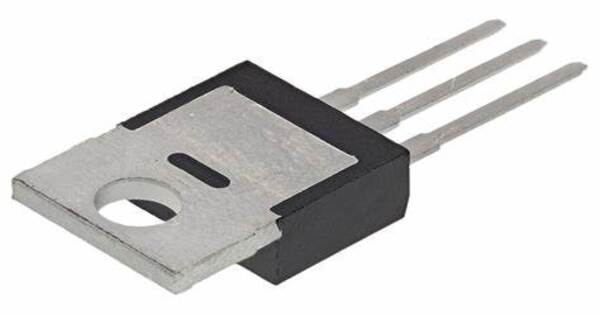A thyristor is a solid-state semiconductor device that functions as a highly robust and switchable diode, allowing current to flow in one direction but not the other, and is commonly used in high-power applications such as inverters and radar generators. It is often controlled by a gate electrode. It is a solid-state semiconductor device composed of four layers of alternating P- and N-type materials. It functions as a switch, turning on and off electrical power or signals in a circuit.
There are two designs, which differ in what causes the conducting condition. In a three-lead thyristor, a tiny current on the gate lead controls the larger current in the anode-to-cathode circuit. Conduction begins in a two-lead thyristor when the potential difference between the anode and cathode is significant enough (the breakdown voltage). The thyristor continues to conduct until the voltage across the device is reverse-biased or removed (by another means), or until the control gate signal is activated on newer varieties.
Some sources use the terms “silicon-controlled rectifier” (SCR) and “thyristor” interchangeably. Other sources define thyristors as more complicated devices made up of at least four layers of alternating N-type and P-type substrate.
Structure and Operation
- Layers and Junctions: Thyristors are made of four layers: PNPN, forming three PN junctions (J1, J2, J3).
- Operation: When a small gate current is applied, the device switches from a high-impedance, off state to a low-impedance, on state, allowing current to flow between the anode and cathode.
Types of Thyristors
- Silicon Controlled Rectifier (SCR): The most common type, used in power control applications.
- Gate Turn-Off Thyristor (GTO): Can be turned off by a negative gate pulse.
- Triac: Can conduct in both directions, used in AC applications.
- Diac: A bidirectional trigger device, often used to trigger triacs.
- Programmable Unijunction Transistor (PUT): Can be programmed to switch at a desired voltage.
Applications
- Power Control: Used in AC/DC motor speed controls, light dimmers, and pressure control systems.
- Switching: Utilized in high-power switching applications.
- Overvoltage Protection: Acts as a crowbar circuit to protect sensitive electronics from voltage spikes.
Characteristics
- Latch-Up: Once triggered, it stays on until the current falls below a certain holding level.
- High Voltage and Current Ratings: Suitable for high power applications.
- Control: Requires a gate signal to turn on, but the signal is much smaller than the main current.
Advantages
- Efficiency: High efficiency in controlling large currents.
- Durability: Robust and reliable in high power applications.
Disadvantages
- Gate Control: Requires precise control of the gate signal.
- Switching Speed: Slower compared to other semiconductor devices like transistors.
- Commutation: Requires additional circuitry for turning off in certain applications.
Basic Operation Principles
- Forward Blocking Mode: No current flows despite forward voltage applied, as the thyristor is in the off state.
- Forward Conducting Mode: When the gate pulse is applied, the thyristor turns on, and current flows.
- Reverse Blocking Mode: Acts like a diode and blocks current when reverse voltage is applied.
















